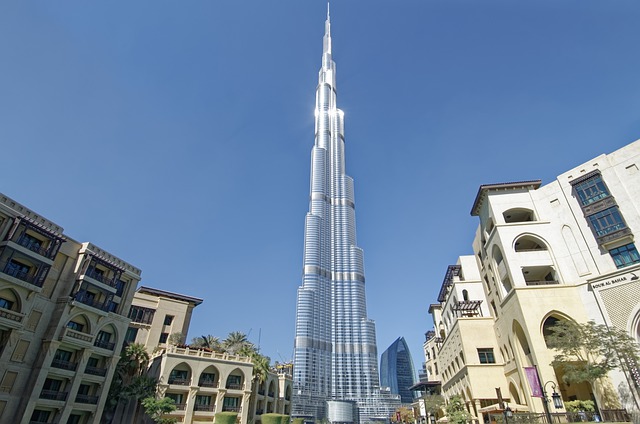
Pushing the Envelope
Top 5 Feats of Engineering
Read a summary using the INOMICS AI tool
1. The Great Pyramid of Giza
While there are several pyramids on the Giza Plateau near Cairo, Egypt, the largest is the Great Pyramid of Giza. This pyramid, built circa 2600 BCE, is 146 metres tall with a base of 230 metres. It is made of two million blocks of stone with an average weight of 2.3 metric tonnes. One of the greatest engineering mysteries is how such heavy blocks were built into a pyramid shape thousands of years ago. Cranes as we know them today were certainly not around. Each stone had to be laid into place individually and in such a way that the other stones wouldn’t fall. First, however, the stones had to be transported from quarries that were kilometres from the building site. Each stone was loaded onto a wooden boat and then carried down the Nile River.
Once the stones reached the building site, they had to be added to the pyramid. One of the best theories we have is that the stones were hauled up the pyramid by use of a ramp and a rope-and-pulley system. That theory, however, has yet to be completely confirmed. The ramp would have had to have an incline of about 20 degrees, which would have been extremely difficult to bring stones up 4600 years ago.
 2. Burj Khalifa
2. Burj Khalifa
The Burj Khalifa is a skyscraper in Dubai, United Arab Emirates. At over 828 metres in height, or more than 160 stories, It has the distinction of being the world’s tallest building, the world’s tallest structure, and the world’s tallest free-standing structure. When it opened in 2010, it shattered Taipei 101’s record of being the world’s tallest building by an impressive 320 metres.
Not only is the Burj Khalifa’s sheer height a feat in itself, the evolution of construction and engineering techniques to build such a marvel is incredible. Because the Burj Khalifa is free-standing, engineers had to perfect the ability to get such a tall building to withstand the wind and to be able to support itself. If the engineers, architects, and builders didn’t execute the construction and engineering techniques to perfection, the whole skyscraper could have come crashing down. Yet they mastered those techniques and brought to life a building that towers more than a half mile into the sky.
Such a gargantuan building required massive amounts of materials and labour to come to fruition. At its peak, 12,000 people worked on the tower every day. More than 22 million person-hours, alongside 110,000 tons of concrete and 55,000 tons of steel rebar, were needed to bring the Burj Khalifa to life.
3. Three Gorges Dam
The Three Gorges Dam, which spans the Yangtze River in Hubei province, China, is the world’s largest hydroelectric plant. Not only does it have a generating capacity of 22,500 megawatts (for reference, the average coal power plant has a generating capacity of 600 megawatts), the reservoir it creates, the Three Gorges Reservoir, has a storage capacity of 39.3 billion cubic metres. That’s the equivalent of 15,700,000 Olympic-sized swimming pools - quite the splash!
Harnessing that much water is a feat in itself, but the sheer amount of materials needed to construct the dam is staggering. The dam, which is about 2,335 metres long and 181 metres high, required an eye-watering 510,000 tons of steel to construct - enough to build 60 Eiffel Towers. If the sheer magnitude of the dam and its reservoir aren’t enough to impress you, perhaps the knowledge that the dam is so large that it slows the rotation of the Earth is. When the dam’s capacity is reached, the mass of the water is so great that it increases the length of a day by 0.06 microseconds.
4. Seikan Tunnel
The Seikan Tunnel is a railway tunnel that passes below the Tsugaru Strait in Japan to connect Honshu Island and Hokkaido Island. Of the 53.9 kilometres of the tunnel, 23.3 of those kilometres are located 140 metres under the seabed, making the Seikan Tunnel the deepest and longest undersea tunnel in the world.
This tunnel, originally constructed between 1971 and 1985 with expansions and upgrades being constructed ever since, required engineers to drill and blast through an area prone to earthquakes. They used roughly 168,000 metric tons of steel and 2,900 metric tons of explosives to build the original single gauge tunnel. Building such a deep and long tunnel underwater would have made many engineers sweat - but the Japanese engineers working on the Seikan Tunnel got the job done.
Despite the length and depth of the tunnel, it performs surprisingly well. Roughly 50 trains pass through the tunnel every day going in both directions. Speed in the tunnel is “limited” to 140 kilometres per hour (with the average bullet train above ground going roughly 285 kilometres per hour) to prevent derailments. After all, if a train derailment is a big problem above ground, dealing with a derailed train that is 140 metres below sea level would be a nightmare.
5. Large Hadron Collider
The Large Hadron Collider, built on the France-Switzerland border near Geneva, Switzerland, is the world’s largest and most powerful particle accelerator. It is used to boost the energy of particles so that theories of particle physics can be tested. At a circumference of 27 kilometres, it is also the largest machine in the world.
The construction of the Large Hadron Collider itself was very impressive. Before it started up in 2008, engineers and builders had to dig up a tunnel 100 metres underground and 27 kilometres in circumference - the amount of earth displaced was immense. The total construction cost for the Large Hadron Collider was roughly 4.5 billion US dollars - certainly nothing to sneeze at!
The specifications of the Large Hadron Collider are extremely impressive as well. The dipoles used operate at a temperature of -271.3℃, which is just 1.9℃ above absolute zero - the lowest temperature possible. There are 9,593 magnets in the Large Hadron Collider, and there are approximately 1 billion particle collisions per second. The sheer size and capacity of the Large Hadron Collider means that not only can it produce valuable insights into particle physics, it does so on a massive scale. Every year, the Large Hadron Collider produces more than 30 petabytes of data, which is roughly 250 years of high-definition video. And you thought Titanic was a long movie!
These five structures have helped humanity to reach some of the engineering limits it never thought possible. If engineers have accomplished these feats now, imagine what will be possible in the future. To be continued...
-
- Programma di Dottorato
- Posted 11 months ago
PhD Programme in Economics (with optional M.Sc. Economic Research)
Starts 1 Oct at University of Cologne and Universität zu Köln, WiSo-Fakultät and Cologne Graduate School in Management, Economics and Social Sciences in Köln, Germania -
- Programma di Dottorato
- Posted 9 months ago
9 PhD Positions in the Research Training Group 2865 “CUDE”
Starts 1 Oct at University of Bielefeld in Bielefeld, Germania -
- Professor Job
- Posted 1 month ago
Associate Professor in Informatics
At Free University of Bozen-Bolzano in Bolzano, Italia










